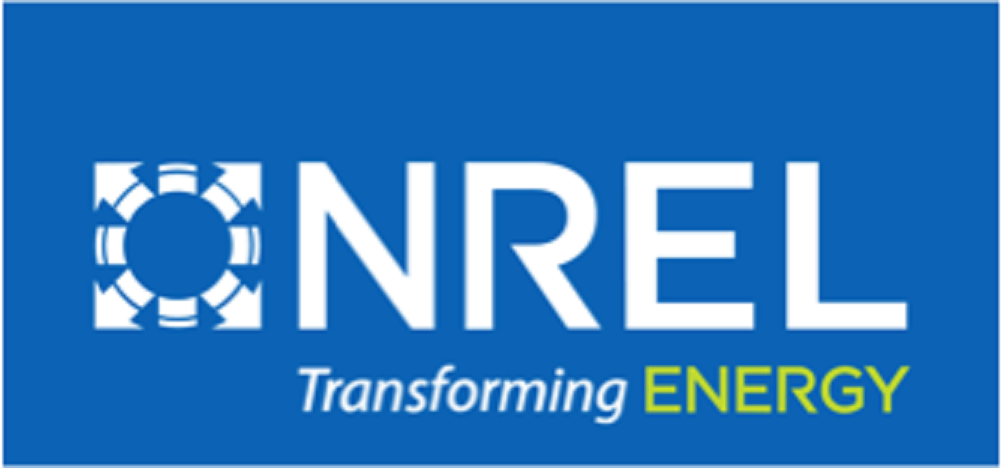NREL: Advanced Air Mobility Takes Flight With New Partnership
Mobility-as-a-service has revolutionized transportation in cities across the country, allowing travelers to connect with services such as shared vehicles, bicycles, and scooters to move within urban areas. The next frontier of mobility aims to ascend to new heights with on-demand air travel integrated with existing transit. This vision is backed by new research, which shows aerial mobility options are nearly ready for takeoff and poised to transform public transit in cities worldwide.
The exploration of airborne transportation and advanced air mobility (AAM) is the focus of a new partnership between the National Renewable Energy Laboratory (NREL) and Supernal—an advanced air mobility company from Hyundai Motor Group. Supernal is developing electric, autonomous air vehicles capable of accommodating four to five passengers with the intent to launch commercial flights as early as 2028. These electronic vertical takeoff and landing vehicles (eVTOL) will integrate with existing transportation networks and move passengers more quickly around high-density city centers—saving people time and offering more transit options.
“As a leader in mobility innovation and equity, NREL is well positioned to offer a deeper look into the feasibility and impacts on the broader energy system for this emerging mode of transportation,” NREL Transportation Data Analytics Researcher and Project Leader Venu Garikapati said.
To inform the plans for a first-of-its-kind public eVTOL network, Supernal and NREL are collaborating with the city of Los Angeles to study this innovative aerial transit mode.
Pinpointing Ideal Candidates and Locations for Advanced Air Mobility
The new project will take a holistic look at AAM, concentrating on the feasibility, opportunities, and challenges of building eVTOL stations—known as vertiports—for future autonomous air vehicles. NREL researchers are evaluating potential locations, travel destinations, and energy demand that will shape the development of this innovative network. The analysis will answer critical questions to determine energy costs, market viability, public acceptance, station distribution, accessibility, and environmental sustainability of the vertiport program.
“Our research will compare AAM flight options with the existing and emerging mobility infrastructure within Los Angeles,” said NREL’s Keith Ropchock, partnership manager for the project. “In identifying vertiport candidate locations, NREL will inform the network map and business plan for Supernal’s airborne passenger vehicles.”
Throughout this research partnership, NREL will thoroughly evaluate existing and emerging mobility technologies and transportation hotspots and conduct market analysis within the greater Los Angeles area. NREL will use existing and historical travel data to develop a travel heatmap that incorporates travel time, costs, and demand for vertiport candidate locations. Researchers will then leverage NREL’s Mobility Energy Productivity (MEP) metric to characterize, measure, and inform movement to and from vertiports. This metric will highlight the feasibility of the AAM network by quantifying the accessibility of each vertiport location. An accompanying visualization tool will compile NREL’s research data to allow the team to easily view and compare network options in Los Angeles and beyond.
“Our team created the MEP metric to holistically measure mobility and ease of access provided to any traveler at any location,” Garikapati said. “We are excited to apply MEP to eVTOL to provide insights in the trade-off of travel time, cost, and energy.”
Another element of the project will investigate the market share for emerging modal options such as AAM. Researchers will implement a fundamental influencing factors model to compare service variables such as travel time, price, and vertiport access with sociodemographic characteristics to analyze the travel demand across passenger segments. Altogether, this extensive behavior analysis will help identify the optimal locations for vertiports.
“We look forward to working with NREL to explore this new dimension of mobility,” said Jaiwon Shin, CEO of Supernal. “This research will allow our team to design a product that integrates with and augments existing transit options and effectively serves local community needs.”
Impact of Advanced Air Mobility on Grid Infrastructure
NREL and Supernal are looking to the skies in pursuit of a new future for urban mobility, but the collaboration underscores the importance of building resilient energy systems on the ground. As the AAM passenger network grows in popularity, the vertiports will rely on harmonious grid integration to power the airborne passenger vehicles.
A significant focus of the NREL research will include evaluating the high-power energy requirements of eVTOLs and cost and operational implications to the electric grid. Researchers will determine energy supply and charging costs at each potential vertiport location to lay a foundation for well-coordinated integration with the grid. Future AAM research will leverage NREL’s Advanced Research on Integrated Energy Systems (ARIES) platform capabilities to identify system-level opportunities and risks of this emerging technology area.
“Extensive research into the energy implications of these airborne passenger vehicles is integral to the success of innovative AAM technologies,” Ropchock said. “Our research will emphasize utility capabilities to determine the impacts of these high-load, fast-charging electric vehicles. Future collaboration with ARIES will allow researchers to evaluate and validate infrastructure components to ensure a smooth introduction of this new technology.”
AAM systems of the future will transform the future of mobility by providing more public options, complimenting existing transit, and moving people to their destinations more quickly. The ground-level emphasis on using renewable energy to power eVTOLs paves the way toward decarbonization for short-haul aviation. Together, Supernal and NREL are ensuring that aerial transportation options meet market demand while advancing clean energy and grid resiliency priorities.

